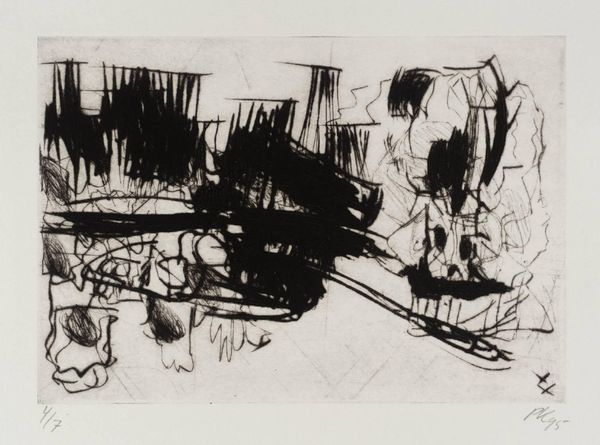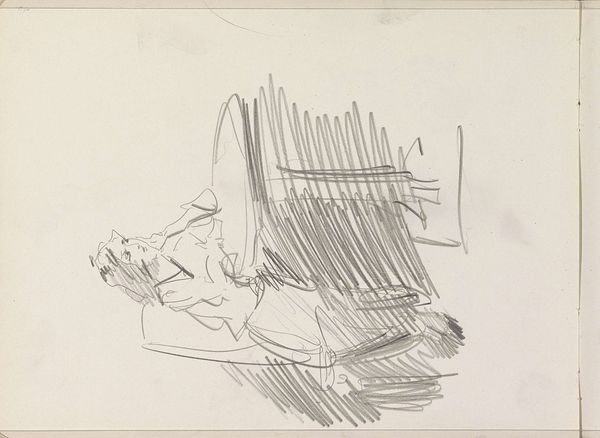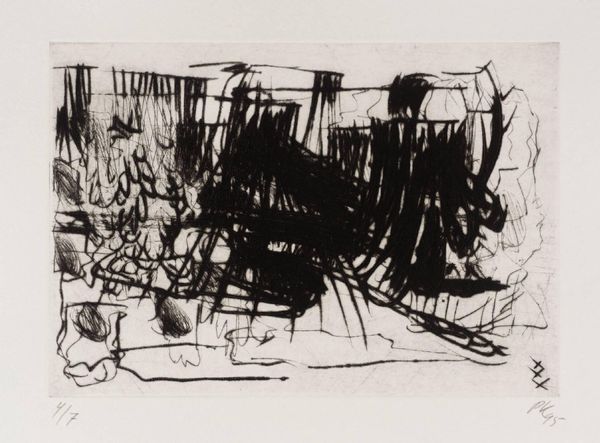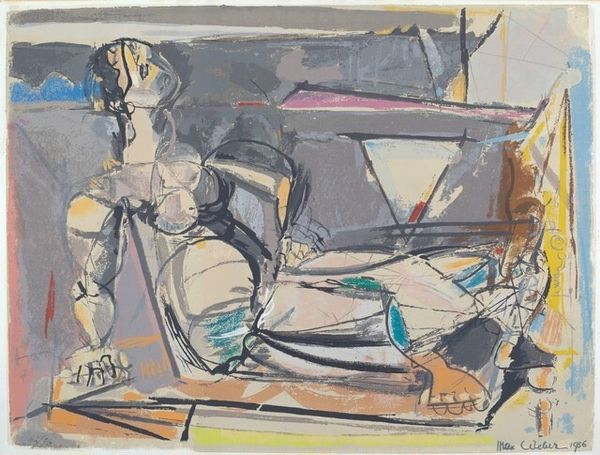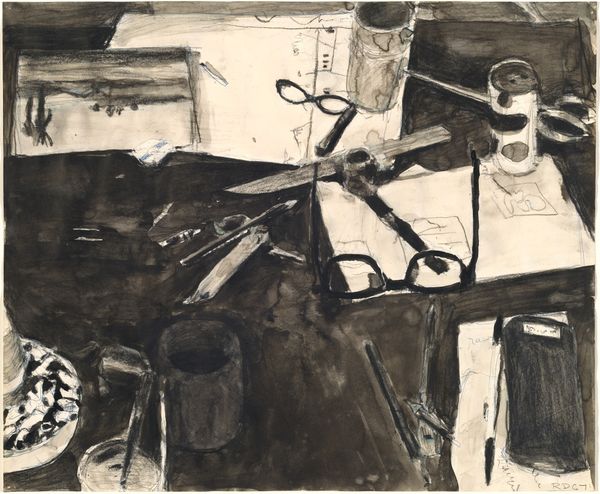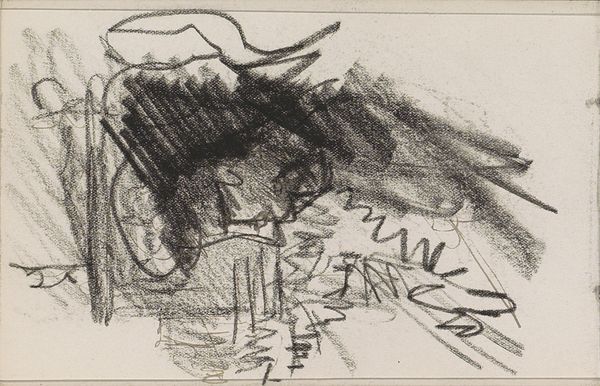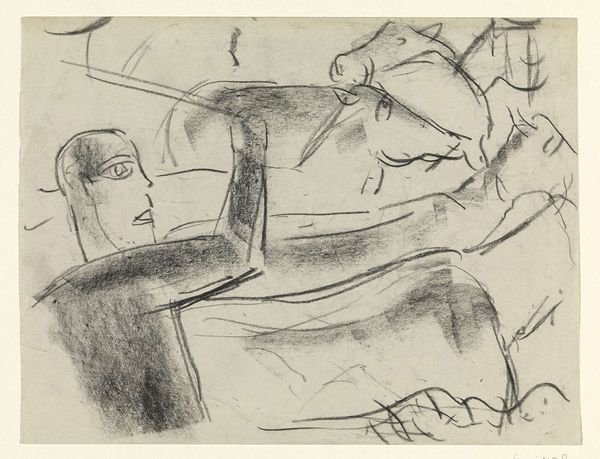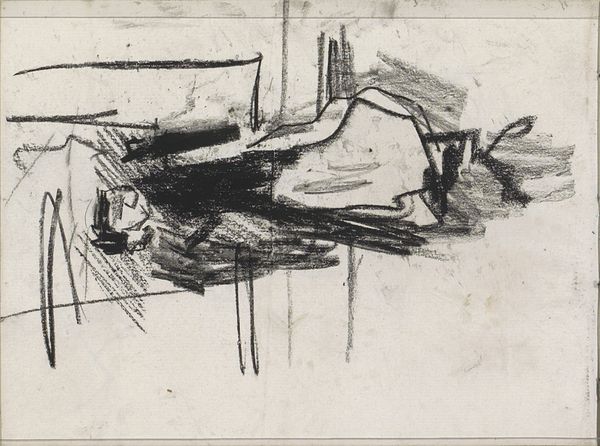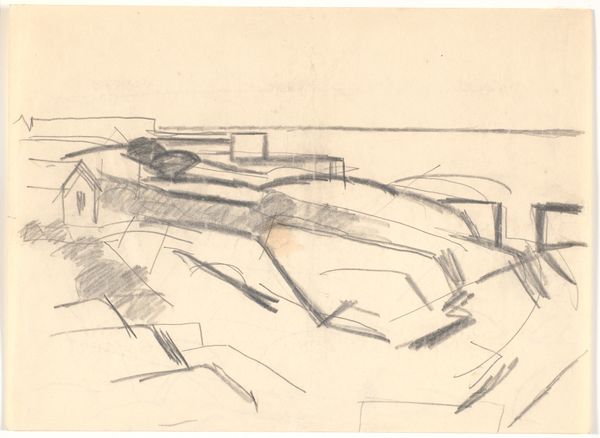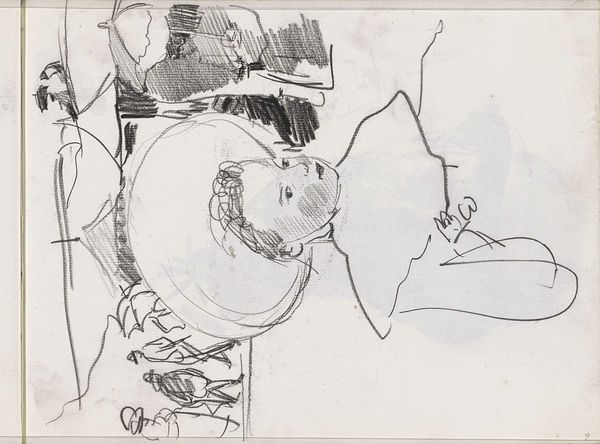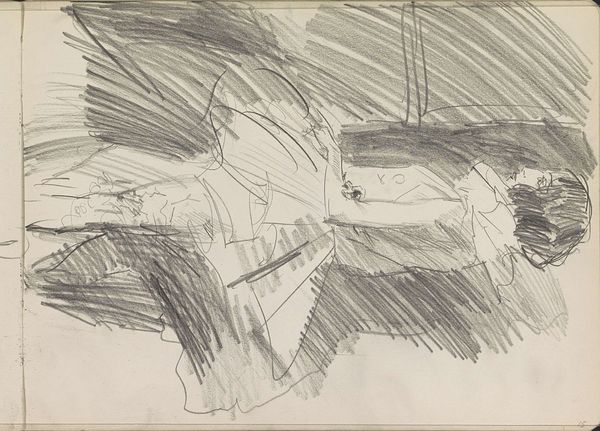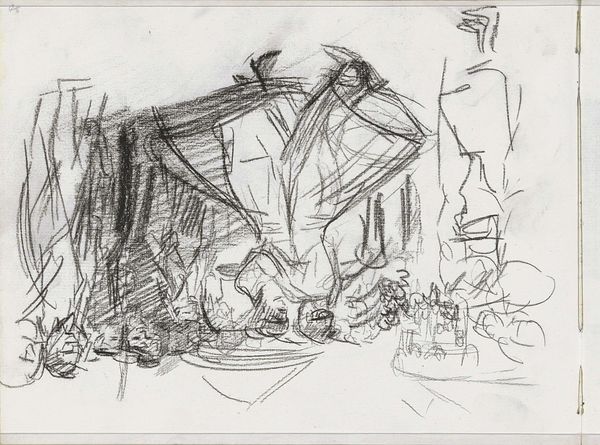
drawing, ink, frottage
#
portrait
#
drawing
#
ink drawing
#
figuration
#
ink
#
expressionism
#
frottage
Dimensions: height 302 mm, width 429 mm
Copyright: Rijks Museum: Open Domain
Curator: Rik Wouters’ ink drawing, "In Bed Liggende Vrouw," believed to be made between 1892 and 1916, immediately strikes me with its stark simplicity. The boldness of the ink strokes against the white paper conveys a sense of vulnerability, perhaps even confinement. Editor: It’s precisely that boldness, those broad, unapologetic marks that get my attention. The way he uses ink—it's almost sculptural, like he's carving out form from a raw material. Do we know anything about Wouters' access to materials at the time? Was he limited, perhaps even using scraps? Curator: We believe the piece exemplifies the influence of expressionism, especially considering the use of ink drawing techniques such as frottage, a technique that is less refined and quite raw. Given his experimentation and constant need to produce new works, using materials at hand feels correct. Editor: Yes, considering frottage allows the artist to leverage texture immediately. It begs the question of the subject, though—the reclining woman. The lack of detail on her face creates a distance, a sense of anonymity. I wonder what the social and cultural context surrounding female portraiture at the time? Were women expected to be idealized, and does Wouters disrupt that expectation by depicting her in such a seemingly unvarnished state? Curator: Absolutely. The period witnessed rising feminist movements and debates around female representation. The artistic exploration of the female body becomes not just a depiction but a statement. This woman is presented not as a decorative object, but as a subject with her own interiority, though partially hidden, presented in such a physical mode of creation. It moves her from high-society beauty to an element deeply enmeshed with process and material itself. Editor: I think exploring his potential disruptions to more traditional portraiture norms enriches the viewers experience here; it definitely does for me. The intimacy of a bedroom scene coupled with the expressiveness of the medium, the immediacy of its process… I see both his exploration, and also my own perception. Curator: Indeed, considering Wouters' choice to render such an intimate scene with such brutal honesty forces us to question our own gaze and the power dynamics inherent in representation. It becomes an important contribution to discourses around art, labor, and female identity during the early 20th century. Editor: A powerful reminder that the materials and methods of art are inextricably linked to the messages they convey. Thanks for unveiling more, from process to underlying messaging.
Comments
No comments
Be the first to comment and join the conversation on the ultimate creative platform.
